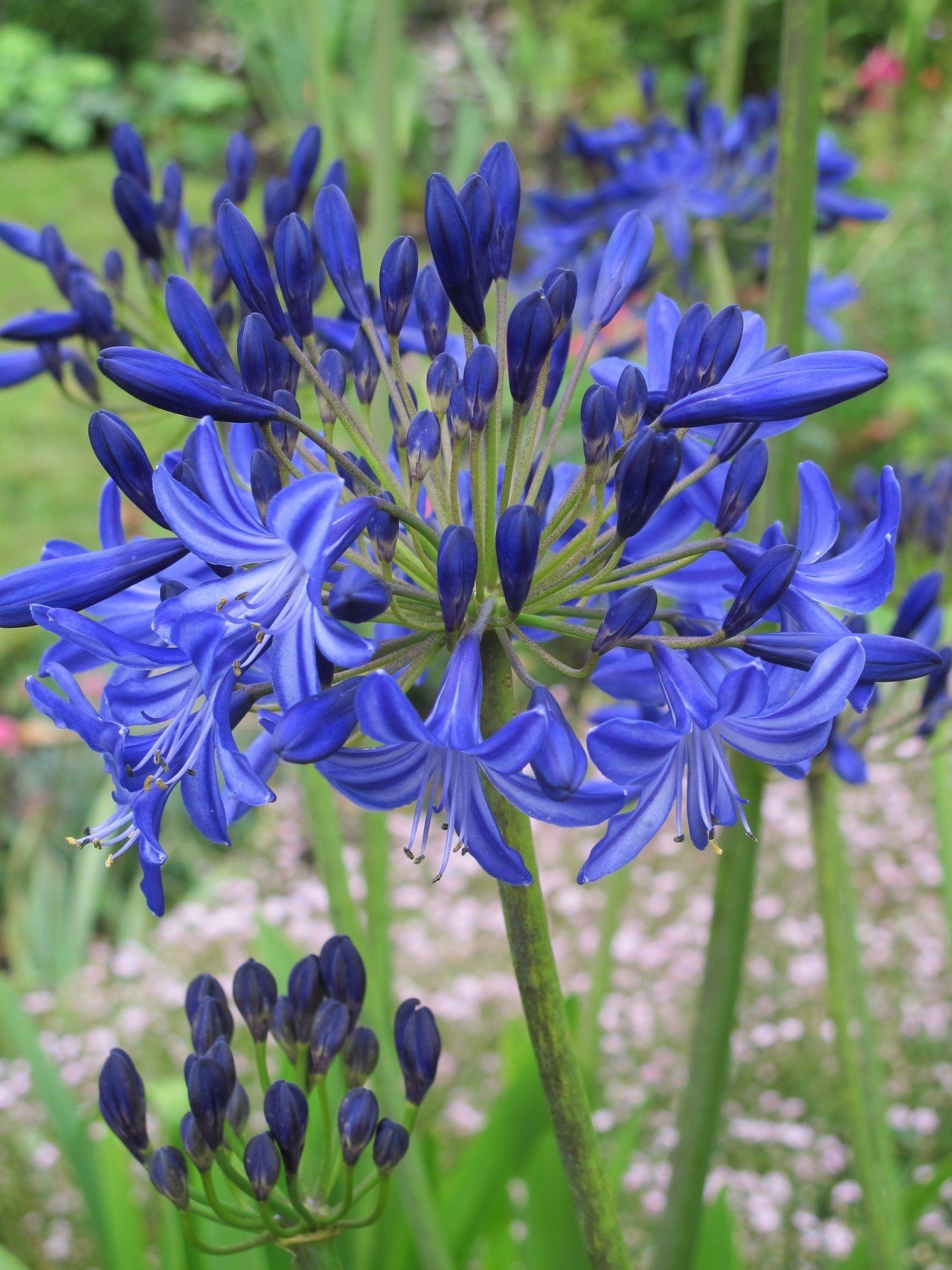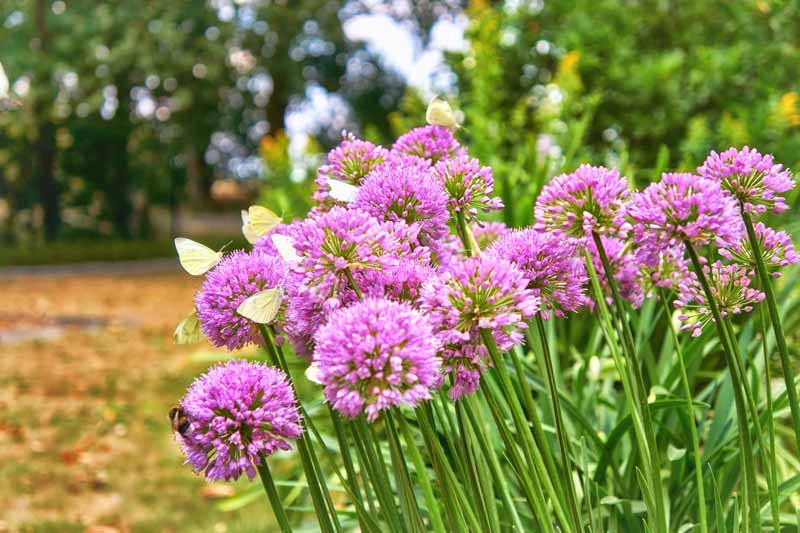Agapanthus Breeding: Tips for Expanding Your Plant Collection
Wiki Article
Releasing the Secret to Successful Agapanthus Cultivation: Tips and Tricks for a Flourishing Yard
In the realm of gardening, growing agapanthus effectively needs a tactical approach that includes different elements of plant treatment. By comprehending the subtleties of agapanthus growing, one can create a setting where these plants prosper and bloom generously.Planting Agapanthus: Finest Practices
When growing Agapanthus, proper soil preparation is crucial for guaranteeing successful development and growth of these beautiful flowers. Agapanthus, typically understood as Lily of the Nile or African lily, grows in well-draining dirt with a somewhat acidic to neutral pH level - Agapanthus. Before planting, it is essential to change heavy clay soils with natural issue such as garden compost or peat moss to enhance water drainage and give essential nutrients for the plantsTo plant Agapanthus, choose a location that receives full sunlight to partial color, as this will certainly advertise healthy and balanced development and bountiful blooming. Dig an opening two times the size of the plant's origin sphere and put the Agapanthus at the same deepness it was previously expanding. Delicately backfill the opening with dirt, pushing down securely to get rid of any air pockets around the origins.
Water the recently grown Agapanthus extensively and remain to maintain the dirt uniformly moist, especially during the plant's energetic growing period. Agapanthus. Using a well balanced plant food once a month can even more support the plant's growth and blooming. By adhering to these ideal methods for planting Agapanthus, you can create a stunning display screen of these exciting blossoms in your yard
Perfect Dirt Issues for Agapanthus
For ideal growth and growing success of Agapanthus plants, making certain the dirt conditions are ideal is crucial. Agapanthus grows in well-draining dirt with a slightly acidic to neutral pH degree varying from 6.0 to 7.0. This sort of dirt permits sufficient water drainage, protecting against waterlogging which can cause root rot. To enhance dirt drain, consider including raw material such as garden compost or peat moss when preparing the planting website. Moreover, Agapanthus favors dirt that is abundant in nutrients, so integrating a well balanced plant food during the expanding season can advertise healthy and balanced growth and lively blooms.
Watering and Fertilizing Tips
To guarantee healthy growth and vibrant blooms, correct watering and feeding strategies are necessary for effective Agapanthus growing. Agapanthus plants benefit from regular watering, especially throughout the expanding period.When it concerns fertilizing Agapanthus, a balanced plant food with equivalent parts nitrogen, phosphorus, and potassium can be applied in the springtime to advertise healthy growth and blooming. Slow-release plant foods are suitable for offering nutrients gradually over an extended duration. Prevent over-fertilizing, as this can result in excessive vegetation development at the expense of blossoms.
In addition, integrating organic issue like compost into the dirt can improve nutrient levels and boost soil structure, assisting in the general health of the Agapanthus plants. By following these watering and feeding suggestions, gardeners can guarantee their Agapanthus plants flourish and generate sensational displays of blossoms.
Pruning and Deadheading Techniques
Appropriate pruning and deadheading strategies play an important role in keeping the health and aesthetics of Agapanthus plants, enhancing the important techniques of watering and feeding for successful farming. Trimming Agapanthus involves removing invested flower heads, yellowing or dead fallen leaves, and general shaping of the plant to advertise much better development. Deadheading, the process of best site removing faded blossoms, not only boosts the plant's appearance yet likewise encourages more flowering.When deadheading Agapanthus, it is recommended to trim off the flower stem at the base making use of sharp, clean shears. This process reroutes the plant's energy from seed production back right into root and foliage development, promoting a healthier and extra robust plant. Routine deadheading can expand the growing duration of Agapanthus and avoid self-seeding, which can bring about overcrowding.
In terms of pruning, Agapanthus usually benefits from a light trim after blossoming to clean the plant and encourage fresh growth. Reducing the invested blossom stems and removing any type of broken or dead foliage helps preserve the plant's vitality and total look. However, it is necessary to stay clear of reducing into the crown of the plant, as this can compromise its health reference and wellness.

Protecting Agapanthus From Pests and Diseases
Carrying out efficient insect and disease monitoring approaches is vital to protecting the health and vigor of Agapanthus plants in growing. One typical pest that influences Agapanthus is the Agapanthus borer, a caterpillar that tunnels into the plant, creating damage to the leaves and blossoms.In enhancement to insects, Agapanthus are susceptible to conditions such as root rot and fungal leaf areas. These issues can often be protected against by making certain proper drain and preventing overwatering. If signs of illness show up, impacted components of the plant ought to be promptly eliminated to avoid more spread. Fungicides may also be utilized as a therapy procedure, complying with the manufacturer's directions carefully. By remaining vigilant and resolving parasite and illness concerns without delay, gardeners can assist their Agapanthus thrive and thrive.

Final Thought
In verdict, effective growing of agapanthus requires proper growing methods, ideal soil problems, sufficient watering and feeding, normal trimming and deadheading, and security from diseases and pests. By adhering to these pointers and methods, garden enthusiasts can guarantee a growing garden loaded with lovely agapanthus flowers. Agapanthus. Remember to maintain constant treatment and interest to detail to promote the health and long life of these magnificent plantsWhen growing Agapanthus, appropriate soil preparation is necessary for making certain effective development and development of these lovely flowers.Water the freshly grown Agapanthus thoroughly and proceed to maintain the soil evenly visit this web-site damp, particularly during the plant's energetic expanding season.For ideal development and flowering success of Agapanthus plants, guaranteeing the dirt problems are perfect is important. When hair transplanting or growing Agapanthus, make sure the soil is well-prepared to supply the essential structure for the plants to establish themselves successfully. One usual insect that influences Agapanthus is the Agapanthus borer, a caterpillar that passages into the plant, causing damage to the fallen leaves and flowers.
Report this wiki page